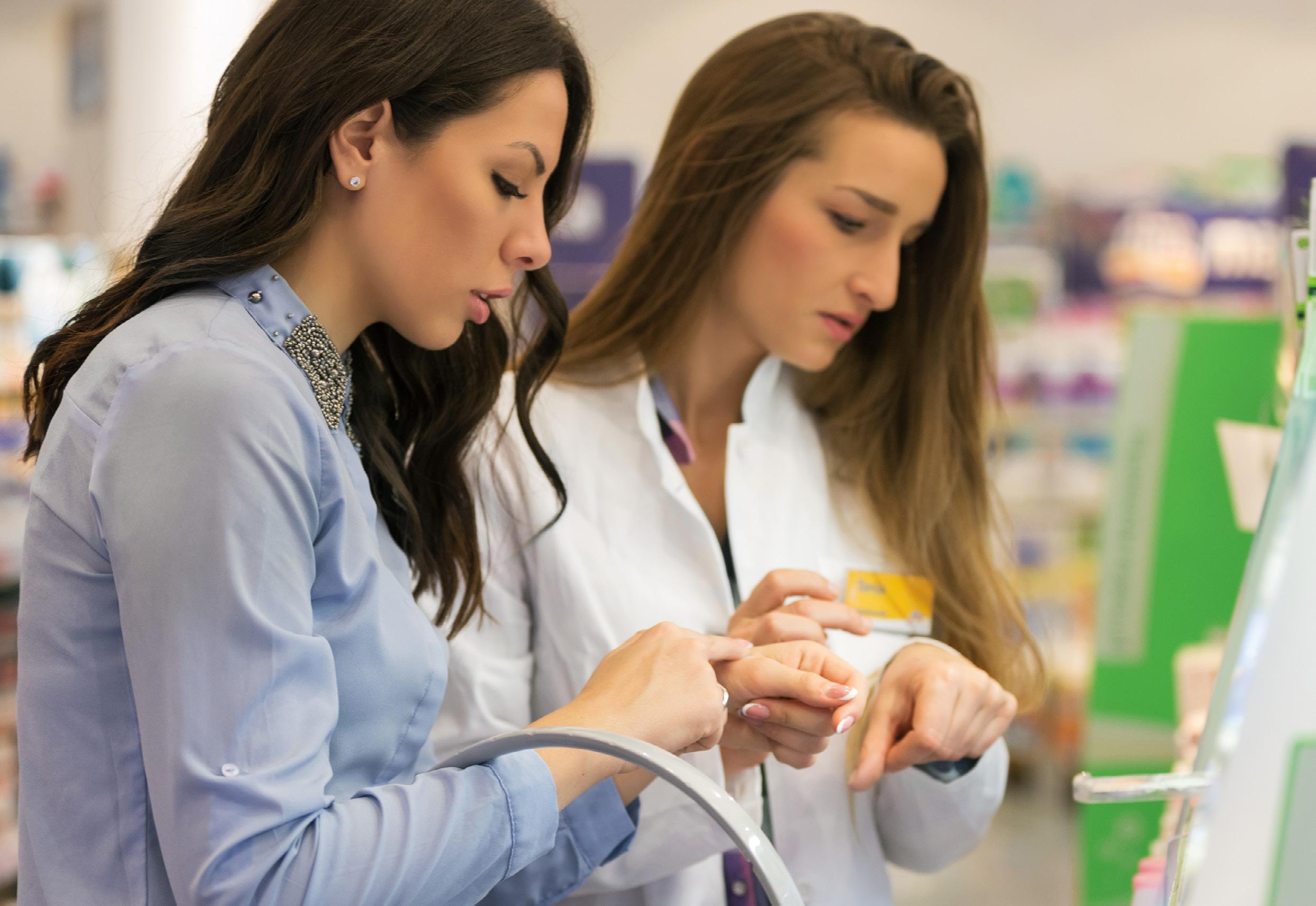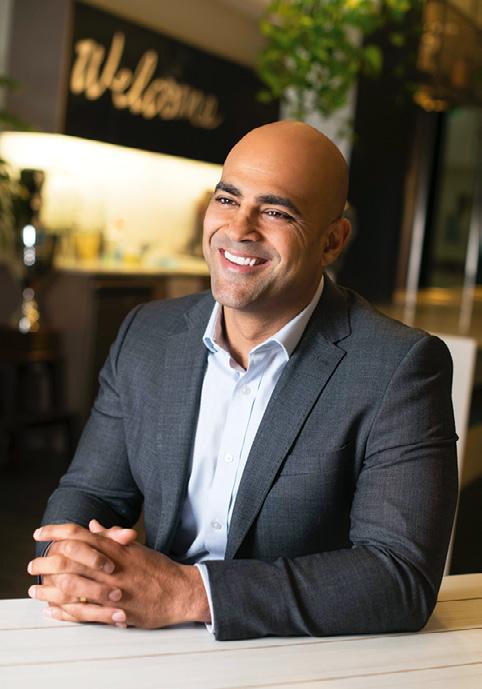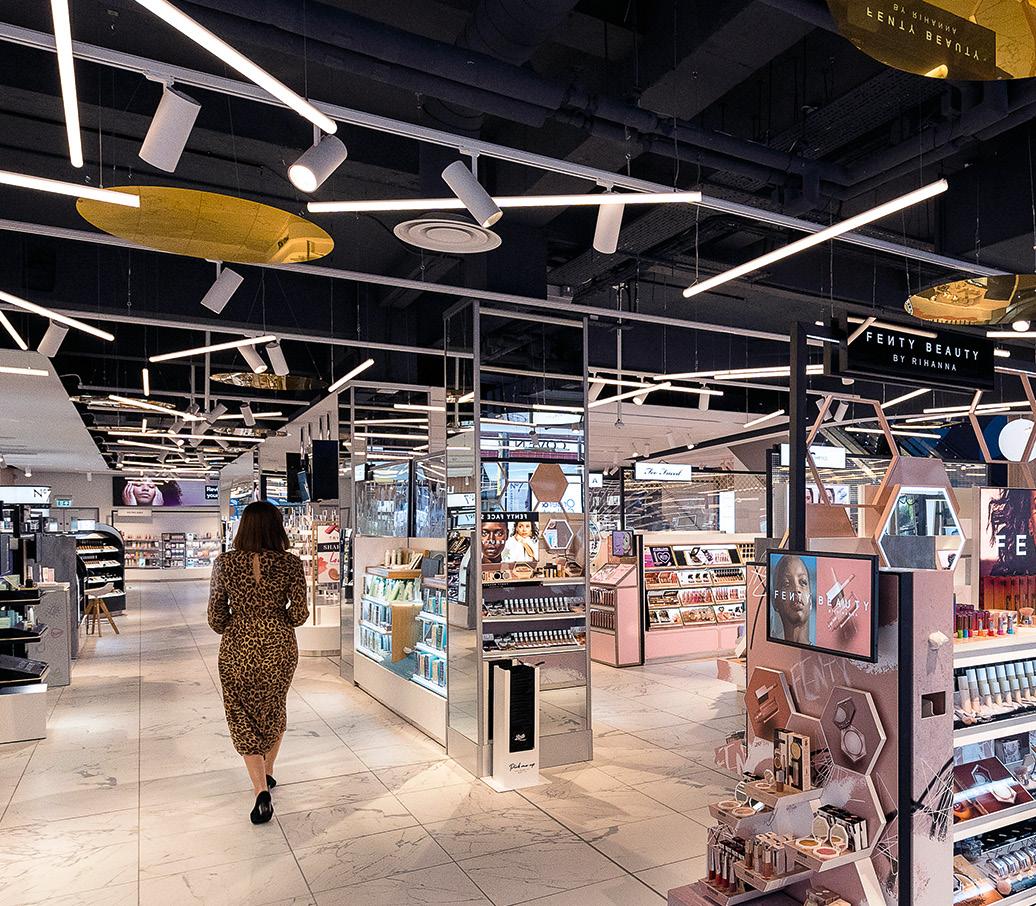
5 minute read
TRENDS: TIME FOR A DOSE OF DISRUPTION
TIME FOR A DOSE OF DISRUPTION
There was a time when the traditional pharmacy was a rather transactional experience. You’d duck in to get your script filled, maybe have a quick chat with the pharmacist, then duck out again. But now, some pharmacies are quickly becoming beauty, health and wellness destinations and even backed by innovative technologies in some cases.
-Danny Lattouf
For chemists, competition is heating up from outside of the industry, as more retailers are now introducing health and wellness into their offering. Last year, Amazon acquired US healthcare network One Medical for US$3.9 billion.
“Healthcare is high on the list of experiences that need reinvention,” said Neil Lindsay, SVP of Amazon Health Services. “We love inventing, to make what should be easy, easier and want to be one of the companies which helps dramatically improve the healthcare experience.

Danny Lattouf is chief strategy officer and partner at retail strategy agency, The General Store.
Contact: danny.luttouf@thegstore.com.au
In addition, while pharmacy has traditionally been slow to embrace technology, online players focused on efficiency and personalisation have launched into the space. Think men’s online healthcare provider Pilot or reproductive health brand Kin Fertility, which created Australia’s first contraceptive pill subscription service.
TIME FOR TECH
Accelerated by Covid, some chemists are finally introducing technology to offer better efficiency and convenience for their customers, many who are now comfortable using telehealth services, but still need to enter a physical store to pick up their medication. In 2021, Terry White Chemmart partnered with Swoop Aero to launch drone medical deliveries to regional customers.
Last year, Priceline unveiled a new tech-led store concept, with self-serve checkouts, a dedicated click-and-collect area and a robotic dispensary, giving pharmacists the opportunity to actually talk to customers about their health concerns.

As an article from Deloitte pointed out: “Traditional retail pharmacies will likely struggle to fend off digital entrants when it comes to the cost and efficiency of dispensing and delivering medications. They can learn from them to think about how to use data and technology to create a hyperpersonalised and human-centred consumer experience.”
A PILLAR OF THE COMMUNITY
Of course, during the peak of the pandemic, all pharmacies experienced increased footfall as they began offering Covid tests and vaccinations. Now that the world is moving on, the challenge for pharmacies is to continue engaging those customers, particularly given the rise of price cutting within the industry.
As a direct way of fighting against the increasing category discount model, a couple of years ago Terry White Chemmart launched “Real Chemistry” to highlight the unique relationship between pharmacists and their community.

Terry White Chemmart
At their best, pharmacists have the ability to develop tight knit relationships with their communities. After all, pharmacy is a highly trusted profession, serving a wide cross-section of people at various stages of their lives, and often at their most vulnerable. One customer might be dealing with the lice that their kids caught from school, while another may be struggling with fertility issues or a terminal illness.
The answer could also lie in services, from diabetes consultations to self-service health checks for diabetes, BMI, blood pressure and more.
In November last year, the NSW Government announced a major reform that expands the number of vaccinations pharmacies can administer and a trial where pharmacists can prescribe medication for a range of conditions.
“While some in the primary care sector have firm views on the role of pharmacists, their positive contribution to the management of the Covid-19 pandemic has demonstrated that they are able to deliver more for their communities,” NSW Health Minister Brad Hazzard said.
BEAUTY TO THE FRONT
In recent years, beauty has been considered a form of “self care” and while more traditional beauty retailers are entering the health and wellness space – there are some chemists which have rolled our beauty offerings.

Boots Edit showcases cult brands such as Fenty Beauty
In 2018, pharmacy giant Chemist Warehouse quietly launched its own beauty brand, Ultra, which is now being rolled out across Australia and New Zealand. Meanwhile, Priceline is currently in the process of launching beautyonly stores in its network, complete with make-up services and lash applications. Similarly, Boots in the UK launched a reimagining of its stores in 2020, with a revamped beauty hall and an extensive wellness department. One area, known as the Boots Edit, showcases trend-based beauty products and as a result, the reimagined offering has attracted new aspirational brands to the retailer, including cult brands Fenty Beauty and The Ordinary.
For many of these pharmacy brands, leaning into beauty is all about offering customers a more accessible and inclusive experience, unlike more aspirational retailers.

“Whether you’re coming back from yoga, the beach or just popping into the supermarket, we are your destination for premium beauty, whenever and wherever you want to shop,” said Anthony Pecora, general manager of Ultra Beauty. “We like to bring Australians all of their favourite brands and products that fit a variety of budgets.”
Indeed, it is well and truly time for a dose of disruption for the pharmacy industry, and while some are slowly embracing technology and new product categories, it will be interesting to see how the sector keeps up with the consumer in the future. Imagine a world where pharmacies become destinations where 3D printers are used in-store, same-day delivery is offered by driverless cars and automation and AI algorithms help a pharmacist’s responsibilities. Watch this space.

